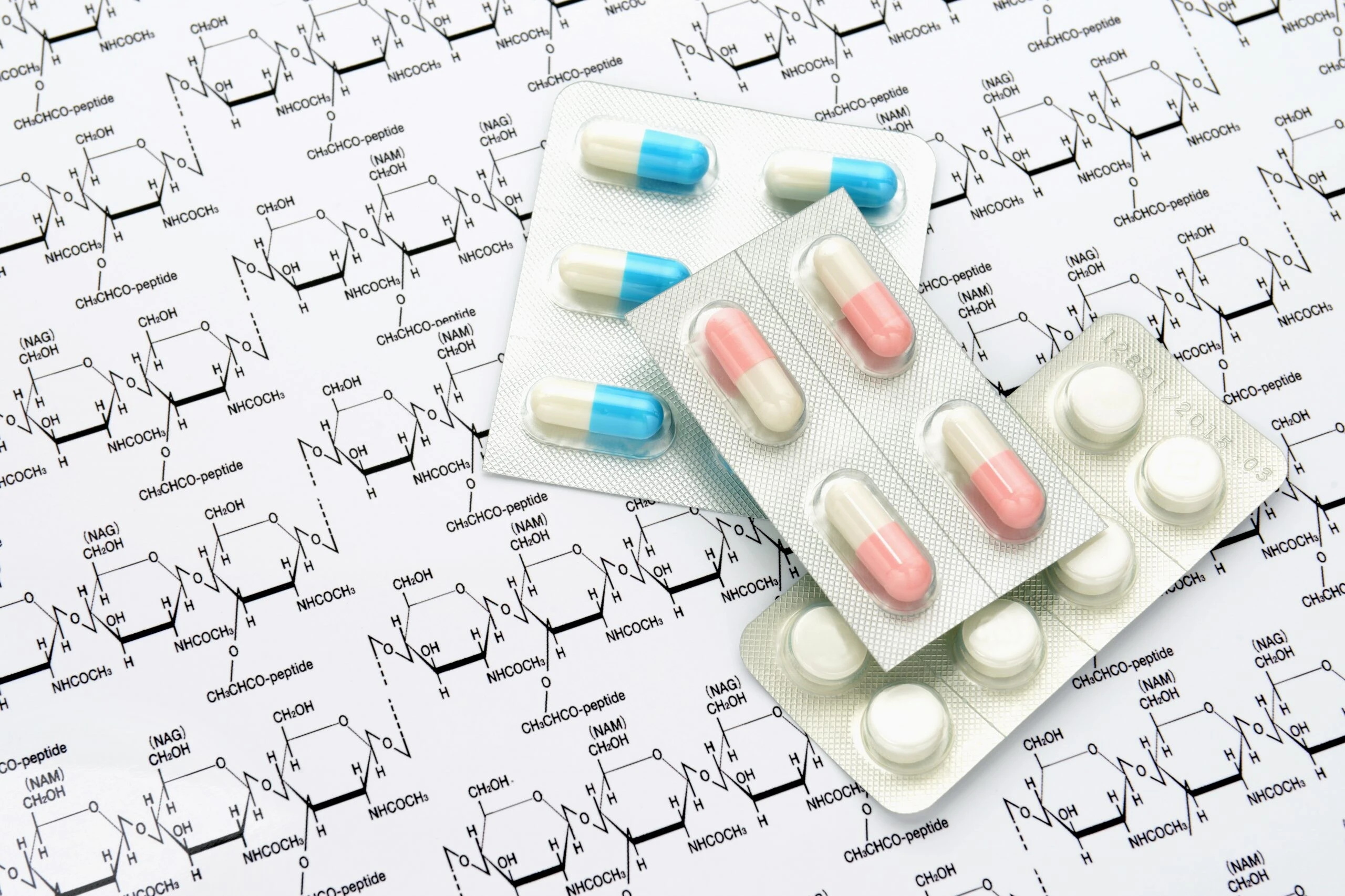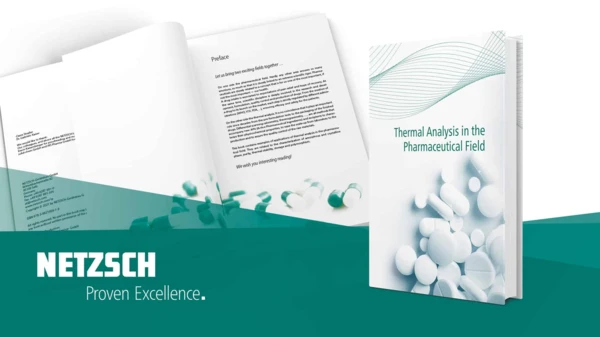
05.06.2023 by Claire Strasser, Aileen Sammler
4 Frequently Used Pharmaceutical Terms You Need To Know
When it comes to thermal analysis in the pharmaceutical field there are several key terms you need to be familiar with. Making sure that pharmaceuticals comply to quality standards, there are four frequently used pharmaceutical terms where Thermal Analysis can help determine potential problems. This article will explain those terms.
In the pharmaceutical field, knowledge of properties such as
- Thermal stability
- Compatibility
- PolymorphismPolymorphism is the ability of a solid material to form different crystalline structures (synonyms: forms, modifications).Polymorphism
- Pseudo-PolymorphismPolymorphism is the ability of a solid material to form different crystalline structures (synonyms: forms, modifications).polymorphism
concerning APIs (Active Pharmaceutical Ingredients) and excipients is important. They can be investigated by two thermoanalytical methods, as explained in the following.
1. Thermal Stability
The ASTM E2550 standard defines the Thermal StabilityA material is thermally stable if it does not decompose under the influence of temperature. One way to determine the thermal stability of a substance is to use a TGA (thermogravimetric analyzer). thermal stability of a material as the “temperature at which the material starts to decompose or react”. It specifies that the determination of this particular temperature takes place using a thermoanalytical method called thermogravimetry.
Please click here to see an example of the Thermal StabilityA material is thermally stable if it does not decompose under the influence of temperature. One way to determine the thermal stability of a substance is to use a TGA (thermogravimetric analyzer). thermal stability determined on Aspirin®.
2. Compatibility
A drug is usually not a single active ingredient but a mixture of the active ingredient with different excipients. In a tablet, for example, excipients are used to improve the appearance and taste of the final product to prevent the tablet from sticking to the punching tool, or to help dissolve it as soon as it is wet, etc. Many excipients are pharmacologically inert, that means, they merely support the stability and efficacy of the active ingredient without exerting any medical effect themselves on our bodies. However, physical and chemical interactions between the active ingredient and excipients can affect the stability, safety and therapeutic efficacy of the drug. In this case, the term drug-excipient incompatibility is used. On the contrary, if the excipient does not affect the active ingredient, both substances are compatible. First information about the compatibility of the active ingredient and excipient is obtained by means of:
- Differential scanning calorimetry (DSC) and/or
- Thermogravimetry (TGA).
You will find an example for a compatibility study with DSC and TGA in our application note:

3. Polymorphism
PolymorphismPolymorphism is the ability of a solid material to form different crystalline structures (synonyms: forms, modifications).Polymorphism is the ability of a solid material to form different crystalline structures (synonyms: forms, modifications). Although different modifications of a polymorph have the same chemical structure, they differ in their physical properties such as:
- Solubility
- Melting Temperatures and EnthalpiesThe enthalpy of fusion of a substance, also known as latent heat, is a measure of the energy input, typically heat, which is necessary to convert a substance from solid to liquid state. The melting point of a substance is the temperature at which it changes state from solid (crystalline) to liquid (isotropic melt).Melting point
- Hygroscopicity
- DensityThe mass density is defined as the ratio between mass and volume. Density
- Specific Heat Capacity (cp)Heat capacity is a material-specific physical quantity, determined by the amount of heat supplied to specimen, divided by the resulting temperature increase. The specific heat capacity is related to a unit mass of the specimen.Specific heat capacity
This influences the processability of drug substances and the performance of drug products such as:
- Stability
- Incorporation into the body
- Dissolution (rate)
- Bioavailability
For the same reasons, PolymorphismPolymorphism is the ability of a solid material to form different crystalline structures (synonyms: forms, modifications).polymorphism also plays a role in food and cosmetics. The different polymorphs can be characterized with differential scanning calorimetry (DSC).
Please read these blog articles to get more information about PolymorphismPolymorphism is the ability of a solid material to form different crystalline structures (synonyms: forms, modifications).polymorphism:
4. Pseudo-polymorphism
Pseudo-PolymorphismPolymorphism is the ability of a solid material to form different crystalline structures (synonyms: forms, modifications).polymorphism is a particular form of PolymorphismPolymorphism is the ability of a solid material to form different crystalline structures (synonyms: forms, modifications).polymorphism where the different modifications result from hydration or solvation. In a solvate, the solvent molecules are entrapped in the crystalline structure of the substance. If this contains more than two solvents, it is referred to as a hetero-solvate. In a hydrate, the solvent in association with the drug is water. The characterization of solvates and hydrates is carried out mainly with thermogravimetry, possibly coupled with evolved gas analysis. A TGA measurement yields information about the amount of solvent/water present in a sample, and thus about the degree of solvation/hydration. Coupled evolved gas analysis allows for the identification of solvents released during heating.
Visit our website to learn more about thermal analysis in the pharmaceutical field: Pharma - NETZSCH Analyzing & Testing
Take also a look into our glossary: Glossary - NETZSCH Analyzing & Testing
Pharma Application Book Available!
Do you already know our Application Book "Thermal Analysis in the Pharmaceutical Field"? This application book uses a variety of specific application examples to illustrate how the corresponding experiments are to be carried out and what conclusions can be drawn from the results.
The book contains eight chapters on more than 260 pages about:
- Thermal analysis methods (DSC, TGA, STA and Gas Analysis)
- Characterization of amorphous and crystalline phases
- Purity
- Thermal stability
- Oxidative stability
- Storage conditions and shelf life
- Polymorphism and Compatibility



